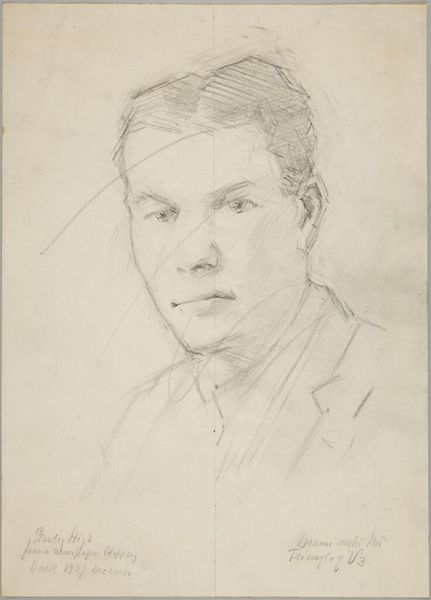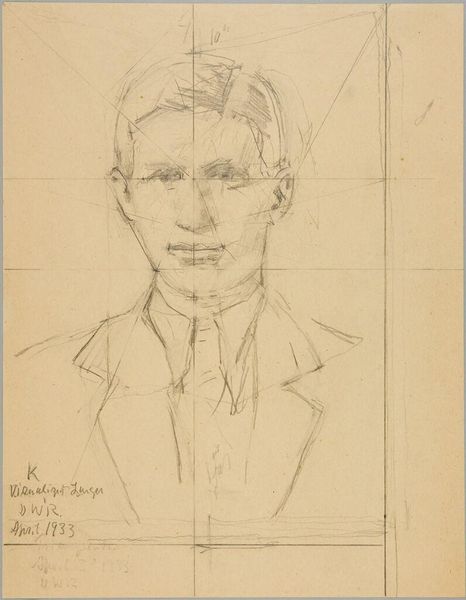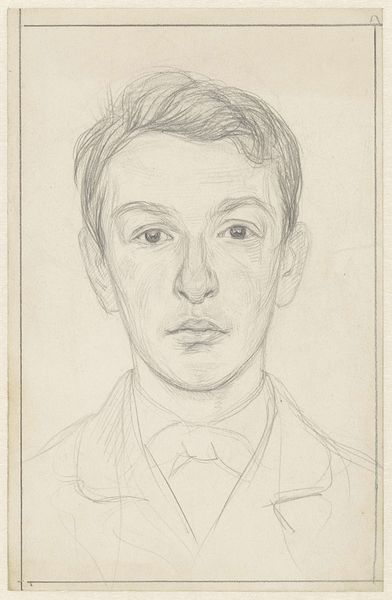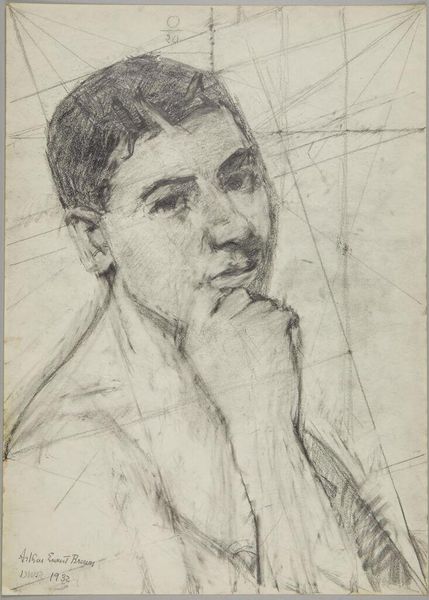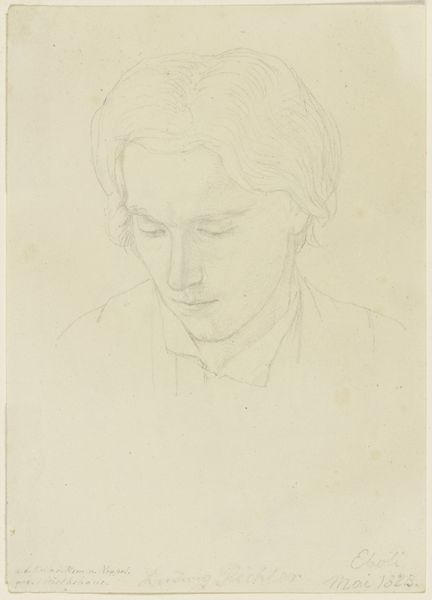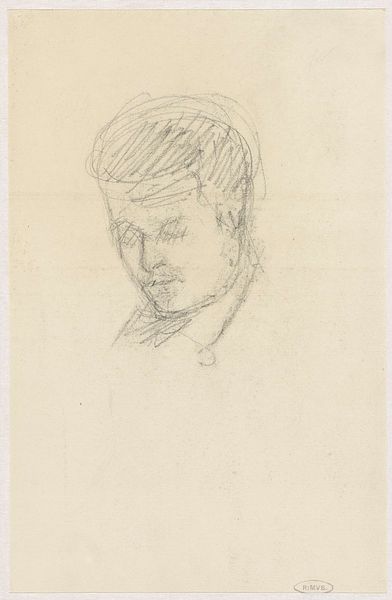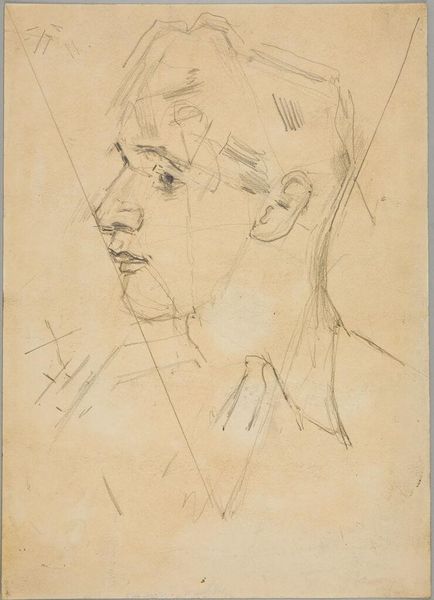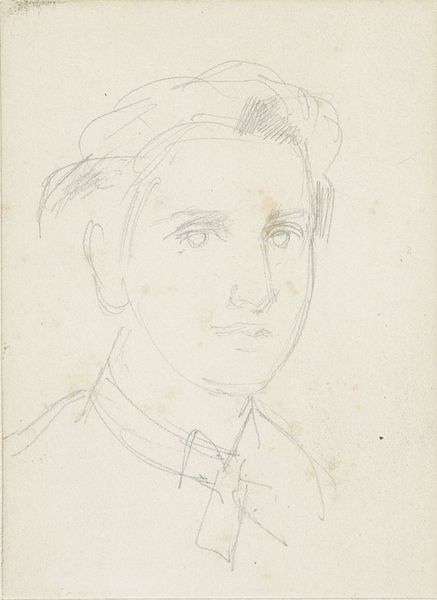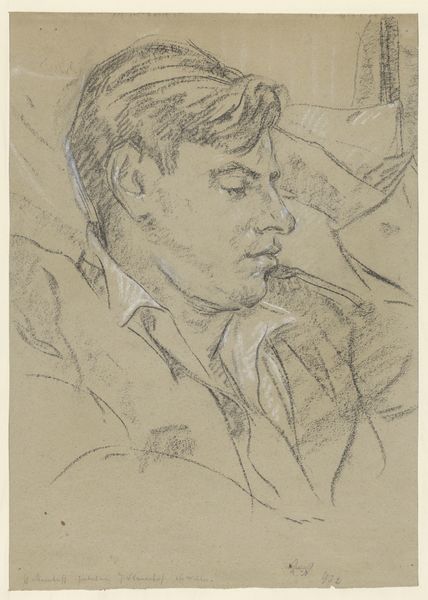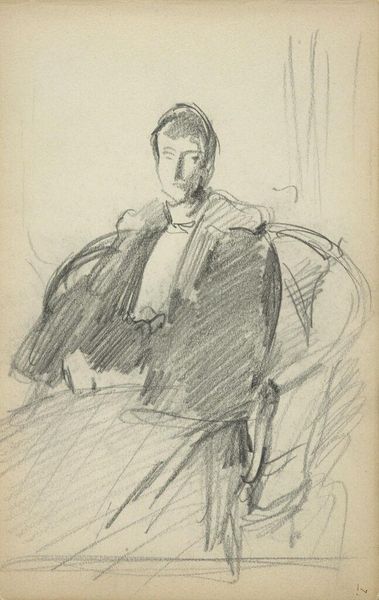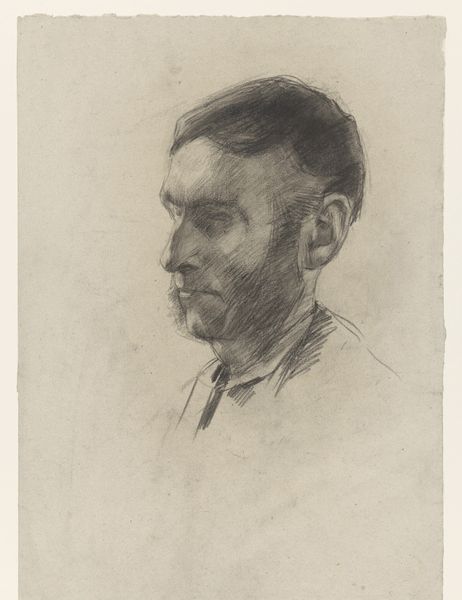
drawing, pencil
#
portrait
#
pencil drawn
#
drawing
#
toned paper
#
facial expression drawing
#
light pencil work
#
pencil sketch
#
personal sketchbook
#
portrait reference
#
pencil drawing
#
pencil
#
portrait drawing
#
pencil work
#
realism
Dimensions: height 230 mm, width 149 mm
Copyright: Rijks Museum: Open Domain
Editor: Here we have "Schets van een vioolspelende jongen," or "Sketch of a Violin-Playing Boy" by Jan Veth, made sometime between 1874 and 1925. It's a pencil drawing, and what strikes me is its quietness. The boy seems so absorbed. How do you interpret this work? Curator: I see a window into the artistic practices of the late 19th and early 20th centuries, particularly within the context of social realism. The focus on a young, presumably working-class, musician isn’t accidental. Think about the rise of social consciousness in art during that period. Does the sketch’s intimacy also hint at the limited opportunities afforded to individuals from marginalized communities? Editor: That's interesting, I hadn't thought about the social commentary aspect. I was more focused on the individual portrayed. Curator: It is a beautiful portrait, of course. But portraiture is never neutral. Who gets portrayed, and how, carries significant cultural weight. The act of sketching itself can be read as a democratizing force. It makes art accessible, less formal. Editor: So, by choosing to sketch a young boy playing the violin, Veth might be making a statement about the value and potential present in everyday life? Curator: Precisely! It pushes back against the established academic focus on the elite, bringing visibility to underrepresented narratives. How does that understanding affect your initial perception of "quietness"? Editor: It adds depth. The quietness becomes less about simple absorption and more about the societal silence surrounding this boy’s world. Thanks for helping me think about art beyond its surface! Curator: My pleasure. Art is always in conversation with the world it inhabits. Recognizing those dialogues is where the real richness lies.
Comments
No comments
Be the first to comment and join the conversation on the ultimate creative platform.
